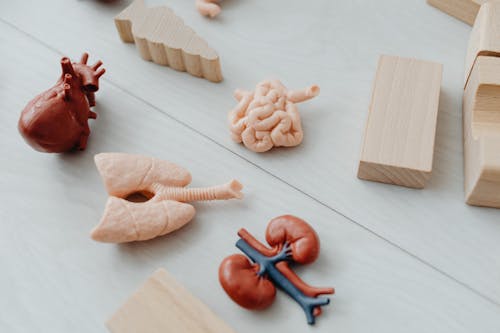💪Arabic Level 1, Activity 11: “أعْضَاء الجِسِم / Body Parts” (Face-to-Face/Online)

Photo by Karolina Grabowska from Pexels
Description:
In this activity, students will practice the body parts vocabulary. They will also practice simple grammar using the demonstrative pronouns (this-that) for either masculine or feminine.
Products: Body parts
Practices: Using body parts with this and that, feminine and masculine.
Perspectives: The importance of using body parts according to feminine and masculine.
- Standard 1.1: Students engage in conversations or correspondence in Arabic to provide and obtain information, express feelings and emotions, and exchange opinions.
- Standard 1.2: Students understand and interpret spoken and written Arabic on a variety of topics.
- Standard 4.1: Students demonstrate an understanding of the nature of language through comparisons of Arabic and their own languages.
Idaho Content Standards for World Languages:
- COMM 1.1: Interact and negotiate meaning (spoken, signed, written conversation) to share information, reactions, feelings, and opinions.
- COMM 2.1: Understand, interpret, and analyze what is heard, read, or viewed on a variety of topics.
- COMP 1.1: Observe formal and informal forms of language.
- COMP 1.2: Identify patterns and explain discrepancies in the sounds and the writing system in the target language.
NCSSFL-ACTFL Can-Do Statements:
- I can recognize all my body parts in Arabic.
- I can use (this/that) when talking about the body.
- I can distinguish feminine and masculine forms of the body.
Materials Needed:
Warm-Up
- Greet students in Arabic السلام عليكم and then share your screen with students and pull up the presentation. And don’t forget to press Slideshow.
رحب بالطلاب باللغة العربية ثم شارك شاشتك مع الطلاب وافتح العرض التقديمي. ولا تنس الضغط على “عرض. - Move to the next slide with the “Can-Do Statements” and read each Can-Do statement in English.
انتقل إلى الشريحة التالية “عبارات Can-Do” واقرأ كل عبارة Can-Do باللغة الإنجليزية. - Next, move to slide #3 and review with students the body parts in Arabic. You will read it in English, and students guess it in Arabic. The Arabic answer will show up after you click the mouse button.
بعد ذلك ، انتقل إلى الشريحة رقم 3 ، والتي تمثل نشاط الإحماء. راجع مع الطلاب أجزاء الجسم ، ستقرأها باللغة الإنجليزية وتجعل الطلاب يخمنونها باللغة العربية. ستظهر الإجابة العربية بعد النقر على زر الفأرة. - Move to next slide #4, read through the slide, and explain to students how to use this\that for feminine and masculine.
انتقل إلى الشريحة التالية رقم 4 ، واقرأ الشريحة ، واشرح للطلاب كيفية استخدام اسماء الاشارة للقريب والبعيد والمؤنث والمذكر.
Main Activity
- In the main activity, students will practice the Demonstrative Pronouns (this/that) using the sentences that describe some of the body parts you just review with them.
في النشاط الرئيسي ، سيتدرب الطلاب على اسماء الاشارة للقريب والبعيد (هذا/ ذاك) باستخدام الجمل التي تصف بعض أجزاء الجسم التي قمت بمراجعتها معهم للتو. - They will translate the English sentences into Arabic.
سوف يترجمون الجمل الإنجليزية إلى العربية. - There are arrows to help students distinguish the “far” distance. The Arabic translation will appear after your click on the mouse button.
توجد أسهم تساعد الطلاب على معرفة المسافة “البعيدة”.
ستظهر الترجمة العربية بعد الضغط على زر الفأرة. - Let students take their time translating the sentences.
دع الطلاب يأخذون وقتهم في ترجمة الجمل.Wrap-Up
- Ask students to write down 3 of their body parts in Arabic. and share it!
اطلب من الطلاب كتابة 3 أجزاء من أجسادهم باللغة العربية. ومشاركتها. - Ask students if they have any questions.
اسأل الطلاب إذا كان لديهم أي أسئلة.
End of Activity
- Ask students to write down 3 of their body parts in Arabic. and share it!
- Read Can-Do statements once more and have students evaluate
their confidence.
(Use thumbs up/thumbs down or download our student cards.) - Encourage students to be honest in their self-evaluation.
- Pay attention, and try to use feedback for future activities!
NCSSFL-ACTFL Can-Do Statements:
- I can recognize all my body parts in Arabic.
- I can use (this/that) when talking about the body.
- I can distinguish feminine and masculine forms of the body.

